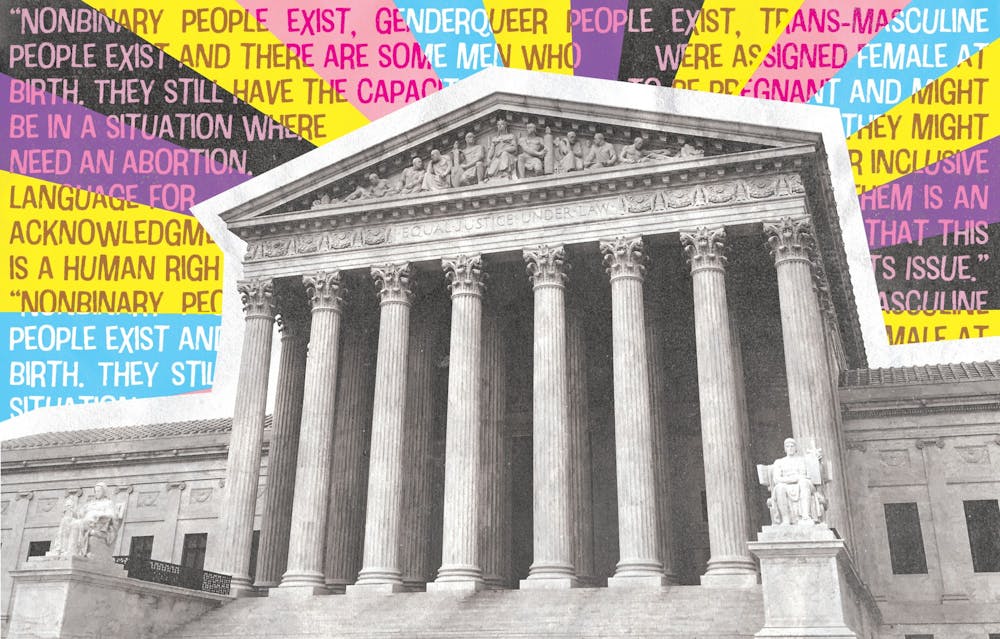Generally, if you were to ask the question, "Who receives abortions?" there is one common answer: women.
And it makes sense. Cisgender women are the largest proportion of individuals who receive abortions. Abortions among women who can become pregnant are extremely common — nearly one in four women will have an abortion in their lifetime, according to the American Civil Liberties Union.
But there is a more accurate answer to this question.
Many people, including cisgender women, non-binary people, intersex people and transgender men can and will receive abortions. This is why it is so important to include these individuals in discussions surrounding abortion. This can be easily done by replacing the term “pregnant women” with “pregnant people.” Making these simple changes to our rhetoric can help make the conversation more inclusive.
“We are using language that accurately reflects people,” Alice McCracken Knight, a genderqueer junior at UNC, said. “Nonbinary people exist, genderqueer people exist, trans-masculine people exist and there are some men who were assigned female at birth. They still have the capacity to be pregnant and might be in a situation where they might need an abortion. Gender inclusive language for them is an acknowledgment that this is a human rights issue.”
Using gender-inclusive language in discussions of abortion does not diminish the experiences and oppression of cisgender women — they go hand in hand.
Women’s rights are gender rights and vice versa, explains Meleena Gil, a college graduate now working towards their doctoral degree in English and Comparative Literature at UNC.
“Feminist standpoint theory is about understanding that those who experience accumulations of oppression are able to better identify and interrogate systems of power," they explained. “We can, as we have historically, understand and deconstruct harmful ideologies when we listen to the communities most immediately impacted by them... Using gender-inclusive language does not decenter women as a category, it decenters the sexist regimes that have constructed gender-based inequalities and invites new experiences into the fold.”
The fight for abortion rights, LGBTQ+ rights and gender rights go hand in hand because they all advocate for the protection of bodily autonomy. They are also one and the same because lesbians, bisexuals, trans people, queer people and trans men can experience pregnancy and deserve control over if, when and how they become pregnant, and whether or not they stay pregnant.



